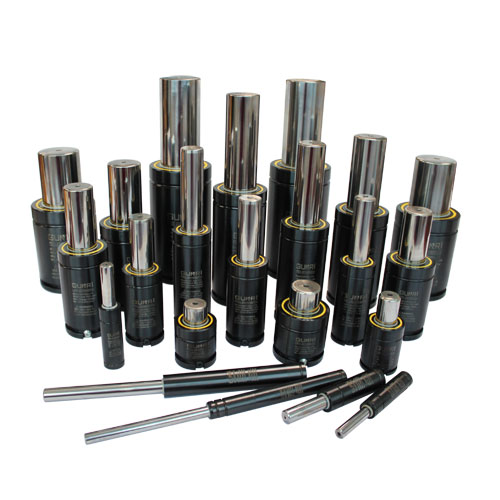Machinist Master’s Experience Summary – Avoiding Common Issues in Molds
Table of contents
- 1. Guide Pillar Damage
- 2. Difficulty in Mold Release at the Gate
- 3. Misalignment of Moving and Fixed Molds
- 4. Bending of Moving Mold Plate
- 5. Bending, Breaking, or Leakage of Ejection Rod
- 6. Poor Cooling or Water Channel Leakage
- 7. Insufficient Length of Guide Groove
- 8. Failure of Fixed-Distance Tensioning Mechanism
- 9. Damage to Inclined Pin Slide Core-Pulling Mechanism
1. Guide Pillar Damage
Guide pillars play a crucial role in guiding the mold to ensure that the forming surfaces of the core and cavity do not collide. They should not be used as load-bearing or positioning components. Significant lateral offset forces during injection can cause guide pillar damage in two scenarios:
- Uneven wall thickness requirements result in higher pressure at thick-walled areas.
- Asymmetry in the plastic part, such as in molds with stepped parting surfaces, leads to unequal counter-pressure on opposite sides.
2. Difficulty in Mold Release at the Gate
During injection molding, difficulty in mold release at the gate can occur, impacting production efficiency. This issue is often attributed to poor smoothness of the gate taper hole, deformation or damage to the small end of the taper hole over time, and inadequate radius on the nozzle, causing material riveting.
Solutions include improving the taper hole’s surface finish, using standard components, and incorporating gate puller rods or ejection mechanisms.
3. Misalignment of Moving and Fixed Molds
Large molds may experience misalignment of moving and fixed molds due to different filling rates and the influence of the mold’s own weight during setup. This can lead to surface damage, bending, or even cutting of guide pillars during mold opening.
Addressing this issue involves adding high-strength locating keys on all four sides of the mold parting surface, preferably using cylindrical keys. The perpendicularity between guide pillar holes and the parting surface is crucial.
4. Bending of Moving Mold Plate
The immense pressure generated by molten plastic inside the mold cavity, typically ranging from 600 to 1000 kg/cm², can result in bending of the moving mold plate. To prevent this, high-quality steel with sufficient thickness should be used. Support pillars or blocks may be added beneath the moving mold plate when necessary.
5. Bending, Breaking, or Leakage of Ejection Rod
The quality of self-made ejection rods may be high, but the cost of production is often a concern. Using standard components is common, but the gap between the ejection rod and the hole should be carefully controlled to prevent material leakage or binding during injection. Ensuring a proper fit and regular inspection are essential.
6. Poor Cooling or Water Channel Leakage
The cooling system’s design is crucial for product quality and production efficiency. Inadequate cooling can lead to defects like uneven shrinkage and mold overheating, affecting the mold’s normal operation.
7. Insufficient Length of Guide Groove
Some molds, limited by mold plate area, may have guide grooves that are too short, causing slider tilting during core pulling and mold closing. According to experience, the length of the slider remaining in the guide groove after core pulling should not be less than two-thirds of the total guide groove length.
8. Failure of Fixed-Distance Tensioning Mechanism
Fixed-distance tensioning mechanisms, like swing hooks or clasps, are used in molds for core pulling or secondary demolding. The synchronized action of these mechanisms is crucial, and any desynchronization can lead to plate skewing and damage. These mechanisms often have short lifespans and can be challenging to adjust.
9. Damage to Inclined Pin Slide Core-Pulling Mechanism
Common issues with this mechanism result from inadequate machining and the use of undersized materials. Two main problems include excessive inclination of the pin and insufficient material size, leading to deformation and wear. An optimal inclination angle should not exceed 25°.
These insights, derived from the experience of a seasoned machinist, provide valuable guidance in avoiding common issues and optimizing the performance of molds in the injection molding process.





